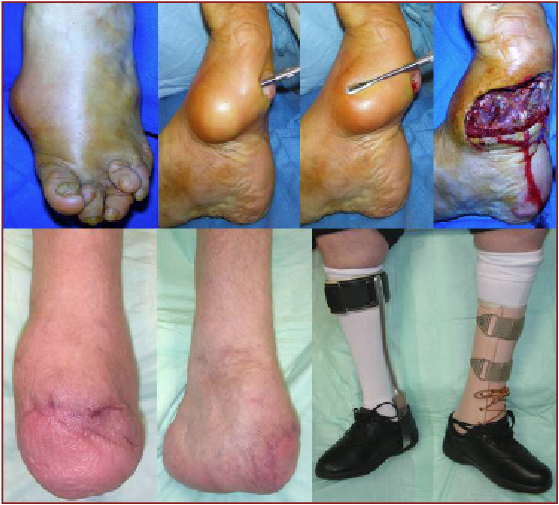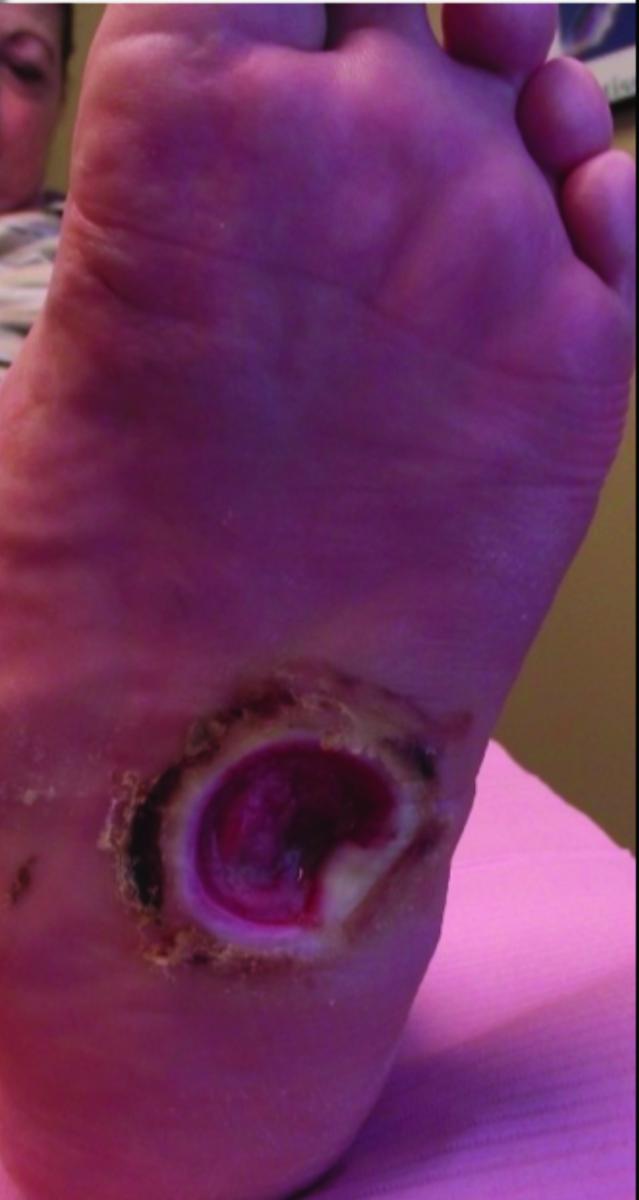Emerging Keys To Improving Diabetes Self-Management For Patients
 The Centers for Disease Control and Prevention anticipate the prevalence of diabetes to increase by 165 percent by 2050.1 Diabetes is the fastest developing chronic disease in the world. Worldwide diabetes-related healthcare expenditures for 2013 were $548 billion.2
The Centers for Disease Control and Prevention anticipate the prevalence of diabetes to increase by 165 percent by 2050.1 Diabetes is the fastest developing chronic disease in the world. Worldwide diabetes-related healthcare expenditures for 2013 were $548 billion.2
With the increasing prevalence of diabetes, healthcare-related expenses will continue to have a significant impact. The current primary driving costs of treatment are hospital admission and amputation. A systematic review of the reported prevalence of foot disease and risk factors in general inpatient populations found that foot disease exists in one in every 20 inpatients and risk factors exist in one out of every three inpatients.3
A multisite point-prevalence study of adults admitted to hospitals in Queensland, Australia found foot disease to be the primary reason for hospital admission in 5 percent of patients and a secondary reason for admission in 2 percent of patients for a total of 11 percent of all admitted patients.4 The study determined that on any given day, 2 percent of all inpatients were admitted due to complications of foot disease. This is in a population with a reported diabetes prevalence of 5 percent. Extrapolating these numbers to the United States can only be worse as the reported prevalence of diabetes is 9 percent and the rate of lower extremity amputation in the population of people with diabetes is more than twice that of Australia (36 out of every 100,000 versus 15 out of every 100,000).
Disparities exist between those most affected by diabetes, namely in regard to race/ethnicity, education level and economic status. Non-Hispanic Caucasians account for only 8 percent of those diagnosed with diabetes while Native Americans comprise 17 percent and Hispanics and African-Americans comprise 13 percent each. Researchers have also shown that patients of lower education and economic status have an increased risk for developing diabetes and having poorer diabetes control.5
What The Statistics Say On Foot Checks And Patient Education
The 2011 Behavioral Risk Factor Surveillance Survey (BRFSS) included results related to diabetes self-management.1 As diabetes is a long-term, chronic condition, international clinical guidelines recommend inclusion of self-management programs including daily foot checks, blood glucose and blood pressure monitoring, diet, exercise/physical activity, obtaining recommended routine clinical services (i.e., A1c testing, eye examinations, flu vaccinations, foot examinations) and medication adherence. Self-management aids in reducing the gap between patient needs and healthcare services available to meet those needs.1
The BRFSS was a telephone survey of adults from 41 states for care that occurred between 2001 and 2010.1 Researchers grouped the respondents by age, race/ethnicity, education level, annual household income, marital status, health insurance and primary care provider status, and employment status. A total of 355,620 respondents reported being diagnosed with diabetes. There was a significant increase of foot examinations by a healthcare provider from 64 percent to 68 percent between 2001 and 2010, but the performance of daily foot checks declined from 75 percent to 71 percent during the same time period. Non-Hispanic African-Americans had higher odds of having a foot examination by a healthcare provider while Hispanic people had lower odds. Caucasian men were also more likely to have a healthcare provider perform a foot examination while being less likely to perform daily foot checks. College graduates, married/partnered respondents, those with an income greater than $25,000 and those 18 to 44 years of age also had lower odds of performing daily foot checks.1
 The increased odds of patients performing daily foot checks and getting a foot examination from a healthcare provider are linked to education that empowers patients, is culturally tailored and encourages community involvement.6 Patient empowerment encourages the autonomy and decision making capability of patients, changing their perspective from the doctor being responsible to them being responsible for their health as they hold the majority of responsibility for their diabetes control.7
The increased odds of patients performing daily foot checks and getting a foot examination from a healthcare provider are linked to education that empowers patients, is culturally tailored and encourages community involvement.6 Patient empowerment encourages the autonomy and decision making capability of patients, changing their perspective from the doctor being responsible to them being responsible for their health as they hold the majority of responsibility for their diabetes control.7
A systematic review of increased integration of foot care knowledge and self-practice found a decreased risk of ulceration in those who performed daily foot checks, had good foot hygiene, did not walk barefoot and used appropriate shoe gear.8 The study showed tailoring education to a patient’s culture, individual needs and beliefs reduces the risk of amputation.
Diabetes is a population health problem. Morbidity and mortality due to foot-related complications have a physical, functional, financial and psychosocial impact on the patient as well as his or her family/support network and community. Accordingly, instruction on self-management should focus on all of these aspects.
Research has demonstrated that engagement with community resources improves self-management outcomes. Engagement can include actual provider involvement or simply the recommendation that patients visit and participate in activities at their local senior or community center.9 Senior and community centers that provide a variety of programming that support physical, social and emotional well-being are particularly beneficial to patients of lower socioeconomic status. These centers provide a safe environment with easy access to health education and information.
How Technological Advancements Can Help Patients Manage Diabetes
Access to timely information is one of the vital components of self-management. Weinstock and colleagues performed a study that used telemedicine to enhance diabetes self-management outcomes in a federally designated, medically underserved or health professional shortage area.10 Participants received a home telemedicine unit to video conference every four to six weeks with a healthcare provider, who would focus on diabetes education, review blood glucose and blood pressure monitoring logs, assist in setting individualized goals, and provide access to educational web pages. Hispanic patients, who had the worst glycemic control, lowest income, lowest education levels and lowest computer experience according to the study, benefited the most from the telemedicine program.
Another study found that patients overwhelmingly and enthusiastically welcomed the integration of a telemedicine program involving a web-based ulcer record and electronic tests between primary and specialty care.11 Use of the telemedicine program increased knowledge and skills in wound assessment, improved the quality, precision, content and structure of medical documentation, and streamlined communication between primary care providers and specialists.
With recent advances in mobile technology, the use of mobile healthcare apps for assistance in self-management has become an appealing avenue of intervention. Whitehead and Seaton performed a systematic review of randomized controlled trials that compared the use of mobile phone apps to traditional self-management modalities.12 Over half of the publications focused on diabetes self-management. Use of a mobile phone app alone had a positive impact on the diabetes self-management outcome of a lower A1c level.
While some may argue that older patients are not as knowledgeable and less likely to use mobile technology, the review found that participants over age 63 were significantly more likely to be substantial users of healthcare mobile apps than younger patients.12 With 64 percent of the U.S. population owning a mobile phone, this type of technology deserves more exploration in its utility to improve patient self-management in the form of increased awareness on the importance of foot health.
In Conclusion
With the increasing prevalence of diabetes worldwide, it is the responsibility of every healthcare provider who treats patients with diabetes to assist in the prevention of foot-related complications. Every podiatrist should provide individualized and culturally tailored education focusing on foot health. This education should focus on the importance of daily foot checks, proper hygiene and shoe gear use, and the importance of routine foot care and examinations. Engagement of community resources, the use of telemedicine, if available, and mobile phone healthcare apps are recommended.
Dr. Marmolejo is a freelance medical writer. Her website is www.scriptummedica.com.
References
- Chen R, Cheadle A, Johnson D, Duran B. US trends in receipt of appropriate diabetes clinical and self-care from 2001 to 2010 and racial/ethnic disparities in care. Diabetes Educ. 2014; 40(6):756-66.
- Kim EK, Kwak SH, Baek S, et al. Feasibility of a patient-centered, smartphone-based, diabetes care system: a pilot study. Diabetes Metab J. 2016; 40(3):192-201.
- Lazzarini PA, Hurn SE, Fernando ME, et al. Prevalence of foot disease and risk factors in general inpatient populations: a systematic review and meta-analysis. BMJ Open. 2015; 5(11):e008544.
- Lazzarini PA, Hurn SE, Kuys SS, et al. Direct inpatient burden caused by foot-related conditions: a multisite point-prevalence study. BMJ Open. 2016; 6(6):e010811.
- Koetsenruijter J, van Eikelenboom N, van Lieshout J, et al. Social support and self-management capabilities in diabetes patients: An international observational study. Patient Educ Couns. 2016; 99(4):638-43.
- Johnson PJ, Ghildayal N, Rockwood T, Everson-Rose SA. Differences in diabetes self-care activities by race/ethnicity and insulin use. Diabetes Educ. 2014; 40(6):767-77.
- Hernandez-Tejada MA, Campbell JA, Walker RJ, et al. Diabetes empowerment, medication adherence and self-care behaviors in adults with type 2 diabetes. Diabetes Technol Ther. 2012; 14(7):630-4.
- Bonner T, Foster M, Spears-Lanoix E. Type 2 diabetes-related foot care knowledge and foot self-care practice interventions in the United States: a systematic review of the literature. Diabet Foot Ankle. 2016; 7:29758.
- Noël PH, Parchman ML, Finley EP, et al. Primary care-public health linkages: Older primary care patients with prediabetes & type 2 diabetes encouraged to attend community-based senior centers. Prev Med Rep. 2016; 4:283-8.
- Weinstock RS, Teresi JA, Goland R, et al. Glycemic control and health disparities in older ethnically diverse underserved adults with diabetes: five-year results from the Informatics for Diabetes Education and Telemedicine (IDEATel) study. Diabetes Care. 2011 Feb;34(2):274-9.
- Kolltveit BC, Gjengedal E, Graue M, et al. Telemedicine in diabetes foot care delivery: health care professionals’ experience. BMC Health Serv Res. 2016; 16:134.
- Whitehead L, Seaton P. The effectiveness of self-management mobile phone and tablet apps in long-term condition management: a systematic review. J Med Internet Res. 2016; 18(5):e97.











